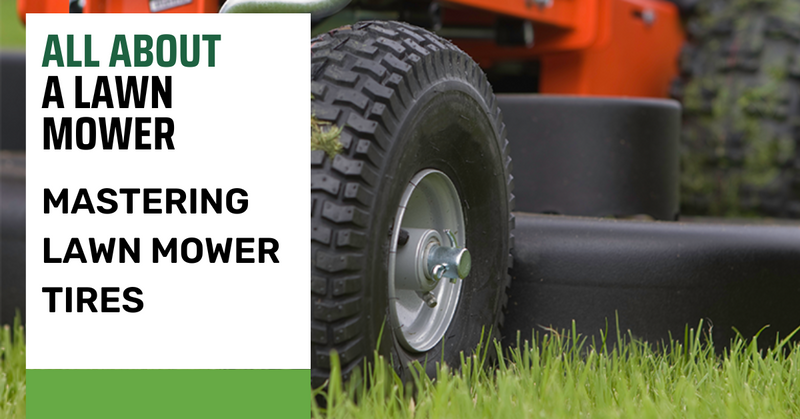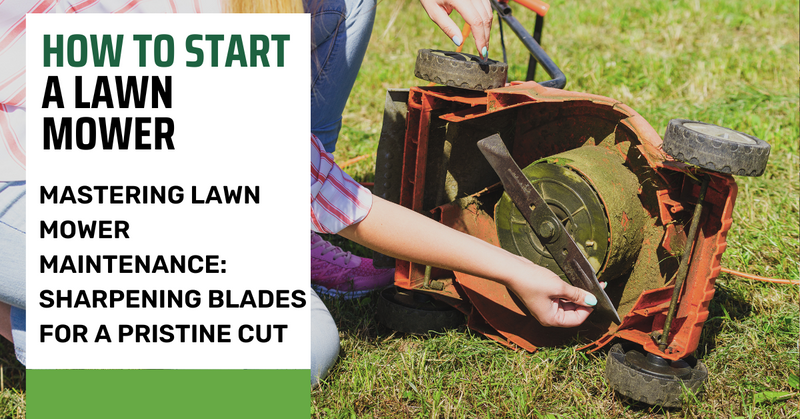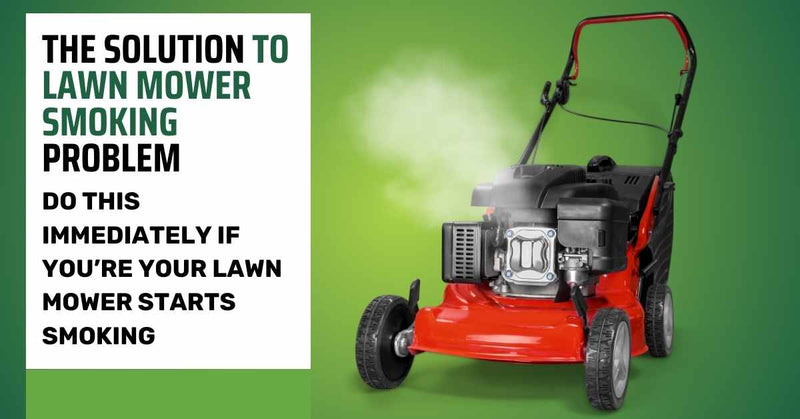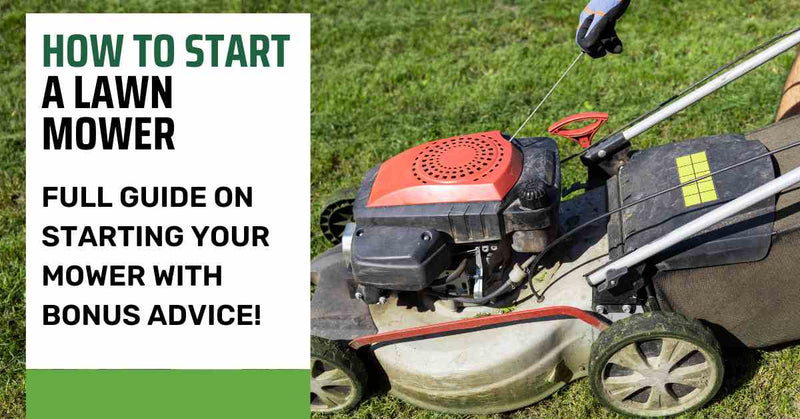

How to Fix a Lawn Mower/Tractor Flat Tire
Lawn Inspection:
Start by walking around your lawn for a quick check-up. Keep an eye out for any solid or heavy objects that could be launched by the mower blades, which spin at speeds of up to 170 miles per hour. These objects have the potential to puncture your tires or cause other damage.
Tractor Inspection:
Periodically, turn off your tractor and inspect the tires. If you notice a tire leaking air, it likely has a puncture from a sharp object on the lawn. Minor tire repairs can be done at home to allow you to continue mowing. However, it's essential to take the leaking or flat tire to a repair shop afterward for professional repair or replacement. The method for repairing tire punctures varies depending on the size and location of the hole.
How to Locate the Hole
Locating a hole in your tractor's tire can be challenging, especially if it's small and not visible to the naked eye.
Here's a step-by-step method to find a small hole in your tractor's tire:
- Prepare a mixture of water and dish soap in a small bucket.
- Swirl the mixture with your hand to create bubbles.
- Dip a cloth into the soapy water.
- Squeeze the mixture over the tire.
- Move the lawn tractor forward to roll the tire, ensuring all parts of the tire are covered with the soapy water mixture.
- Watch for the formation of bubbles; if you notice many bubbles coming from one area, it indicates a leak or hole.
- Use a paint pen to draw a circle around the area where bubbles are forming.
- Repeat the process to check for any other potential holes.
How to Repair the Tire?
Small Hole
- Begin by acquiring a canister of tire sealant.
- Employ pliers to extract any foreign objects protruding from the tire puncture(s).
- Rotate the valve stem cap counterclockwise to detach it from the afflicted tire.
- Affix the applicator tip to the valve stem by turning it clockwise.
- Break the tab typically found on the sealant can to enable the flow of sealant. Shake the can to ensure proper mixing.
- While keeping the can upright, depress the button on top to dispense the sealant into the tire.
- Cease adding sealant once the tire attains the desired inflation level.
- Remove the applicator tip from the valve stem.
- Reattach the valve stem cap securely.
Larger Hole :
Can You Use Fix a Flat on Lawn Mower Tires?
Are you tired of dealing with flat tires on your lawn mower? As a lawn care enthusiast, you understand the frustration of interrupted mowing sessions due to punctured tires. Fortunately, there's a popular solution on the market: Fix a Flat. But the question remains: can you use Fix a Flat on lawn mower tires? Let's dive into the details and find out.
Understanding Fix a Flat:
Fix a Flat is a convenient solution designed to seal punctures and reinflate tires quickly and easily. Typically used for automotive tires, many wonder if it's suitable for smaller, lighter lawn mower tires.
What Causes a Flat Lawn Mower Tire?
Punctures
Punctures can happen anywhere, even to your lawn mower. Stan’s Sealant offers a solution. Its milky-white fluid contains tiny crystals that rush to seal punctures quickly. It can plug holes up to ½” in diameter, providing advanced protection for your tires, even against landscaping spikes.
Poor Seal At The Rim
Tires can develop slow leaks due to minor imperfections in the bead or rim. Instead of costly replacements, Stan’s Sealant offers a hassle-free solution. Once added to the tire, it spreads evenly, sealing imperfections as the tire rotates. No special tools or trips to the store needed—just add the sealant, inflate the tire, and you’re ready to go.
Weather Corrosion
Lawn mower tires endure harsh conditions, often succumbing to weather damage like cracking and drying. Instead of replacing them, reinforce the inner seal with Stan’s Sealant. It penetrates cracks caused by weathering, forming a durable yet flexible barrier that allows the tire to hold air reliably for seasons to come. Upon injection, the sealant coats all internal surfaces, with the remaining liquid serving as backup to guard against leaks for up to two years.
Leaky Valve Stems
Valve stems, like tires, are made of rubber and can wear out, causing leaks. Since sealant won't repair exposed areas prone to leaking, damaged stems usually need replacement. Fortunately, new stems are much cheaper than tires. Installing a new stem provides a convenient chance to add sealant, protecting against various types of slow leaks.
Compatibility with Lawn Mower Tires:
The good news is that Fix a Flat can indeed be used on lawn mower tires in certain situations. However, it's essential to consider a few factors before proceeding.
Tire Size and Type:
Lawn mower tires come in various sizes and types, including tubeless and tube-type tires. Fix a Flat is most effective on tubeless tires, as it relies on the pressure inside the tire to distribute the sealant evenly. For tube-type tires, Fix a Flat may not work as effectively due to the presence of an inner tube.
Severity of the Puncture:
Fix a Flat is best suited for minor punctures, such as those caused by nails or thorns. If your lawn mower tire has a significant gash or tear, Fix a Flat may not provide a lasting solution. In such cases, replacing the tire or seeking professional repair may be necessary.

Application Process:
Using Fix a Flat on lawn mower tires is a straightforward process. Simply remove the valve cap, attach the nozzle of the Fix a Flat canister to the valve stem, and release the sealant into the tire. Afterward, reinflate the tire to the recommended pressure.
Pros and Cons:
Pros:
- Convenience: Fix a Flat offers a quick and easy solution for repairing minor tire punctures.
- Cost-Effective: Compared to purchasing a new tire or seeking professional repair, Fix a Flat is a budget-friendly option.
- Minimal Downtime: With Fix a Flat, you can get back to mowing your lawn in minutes, avoiding lengthy repair delays.
Cons:
- Temporary Fix: While Fix a Flat can seal punctures temporarily, it may not provide a permanent solution, especially for larger or more severe tire damage.
- Compatibility Issues: Fix a Flat may not be suitable for all types of lawn mower tires, particularly tube-type tires or tires with significant damage.
- Environmental Impact: The sealant used in Fix a Flat can be harmful to the environment if not disposed of properly.
Better Alternatives to Fix-a-Flat
- Tire Slime: A similar sealant product designed for lawn equipment, bikes, and other tubeless tires. Often considered a better choice for mowers.
- Tire Plugs: A more permanent repair that involves inserting a rubber plug into the puncture. Requires some tools and expertise.
- Inner Tubes: Inserting an inner tube into a tubeless tire can be a good fix if the tire itself is still in good shape.
- Professional Repair: A tire shop can patch or replace your tire for the most reliable, long-lasting solution.











